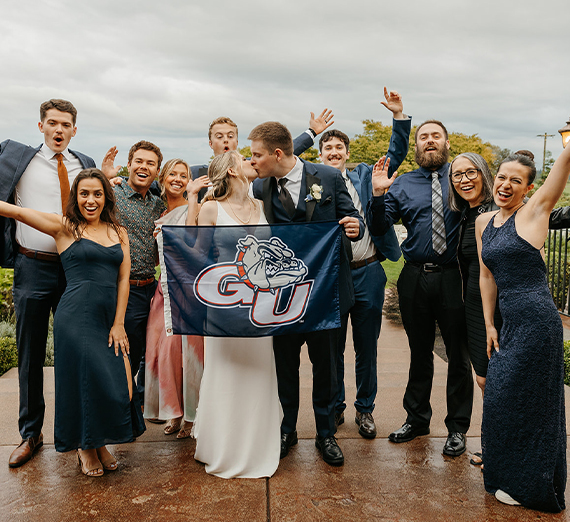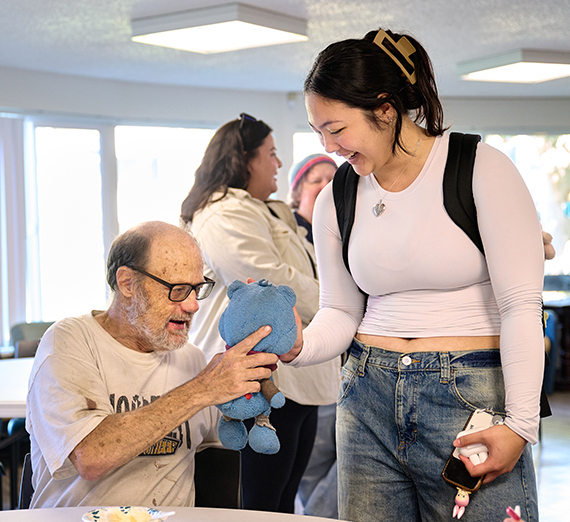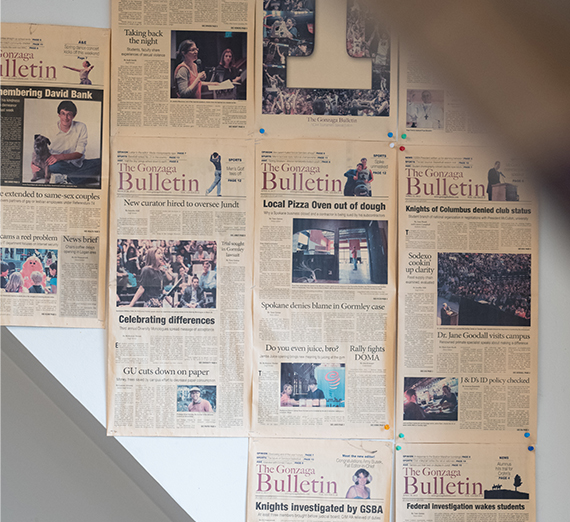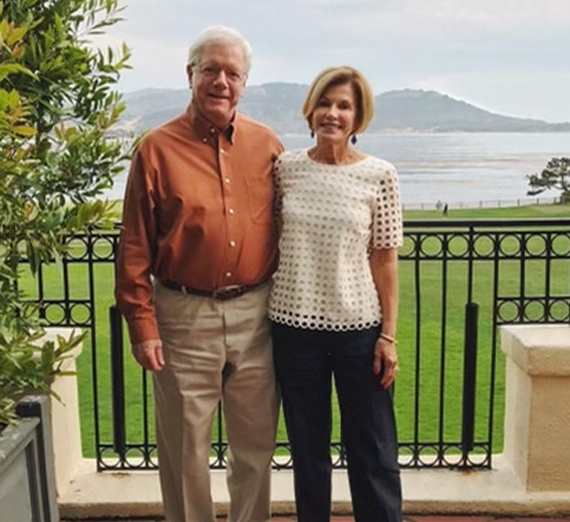Senior Spotlight: Anthony Di Mauro Brings Catholic Relics to the Light
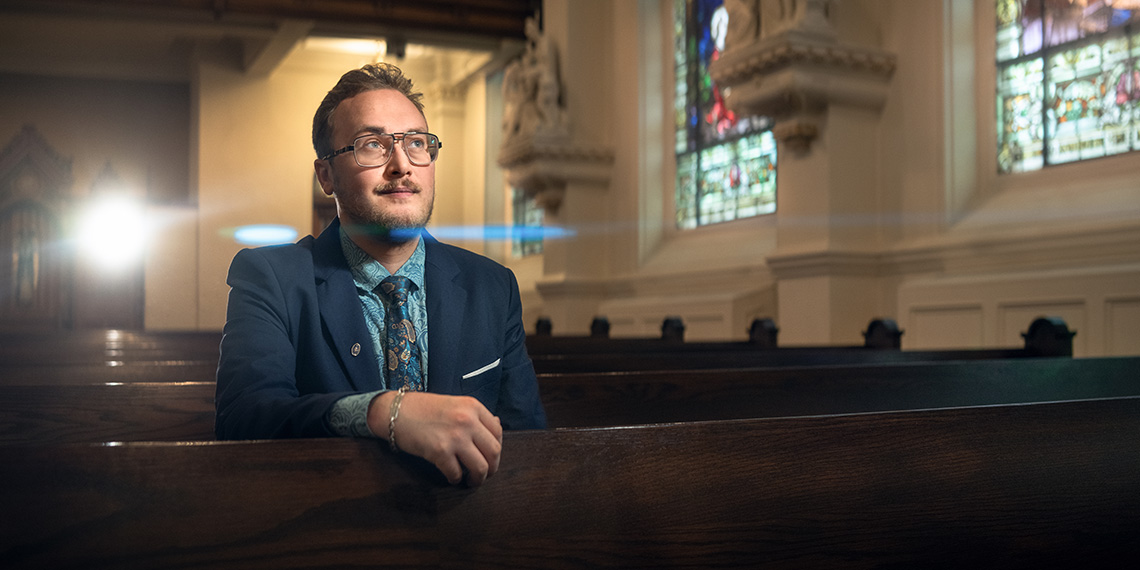
This piece is part of our Senior Stories series, in which we highlight GU students throughout the year.
Name: Anthony Di Mauro ('25)
Major: Journalism, Public Relations and Marketing
Hometown: Yakima and Spokane, Washington
During senior Anthony Di Mauro’s study abroad trip to Florence, Italy last summer, a local priest named Father Don Alessandro Andreini invited him to visit Florence Charterhouse, a fourteenth-century Carthusian monastery that sits atop a hilltop just outside the city.
Di Mauro was amazed at the serendipity of the invitation. For the past couple years, he’d felt called to help preserve Catholic relics and share them with others.
Fr. Andreini, who he had befriended at weekly masses offered to students, just so happened to also serve in the Community of San Leolino which presides over the monastery. And the monastery just so happened to be steeped in the tradition of relics. Historically, it had held one of the world’s largest collections, but over the centuries the complex had been ransacked leaving only a few.
Di Mauro traveled to Florence Charterhouse and participated in a small guided group tour, admiring the art and architecture as he took in the traditions of the Carthusian monks. The religious order is dedicated to the practice of solitude and contemplation, their way of life remaining largely the same for more than nine centuries.
Then, he was invited to explore on his own.
“I entered a space where the monks used to gather throughout the day for prayers called the Liturgy of the Hours,” recalls Di Mauro.
Out of the shadows
In Catholic and Orthodox traditions, relics can be thought of as “what’s left behind” by Christ or any of his saints. This can be their physical remains (such as bones, hair or blood) as well as objects or clothing they possessed. From the early centuries of Christianity and continuing to this day, relics have been preserved and venerated as tangible connections to those who led holy lives. They’re often housed in ornate cases called reliquaries to signify their sacredness and protect them.

Di Mauro was astonished to find the skeletons, who he later learned were the remains of three martyrs, St. Euphrasia, St. Secundus and St. Servulus. But it wasn’t the first time he’d come across a relic in an unexpected place. Years prior to his trip to Florence, his interest in relics was piqued as a parish member at Spokane’s Our Lady of Lourdes Cathedral. The parish displayed a relic of St. Peregrine, the patron saint of persons with cancer, during a nine-day period of prayer and meditation called a novena.
After the novena, Di Mauro and several other parishioners were eager to know when they might be able to see the St. Peregrine relic again. Di Mauro asked one of priests, and the two began discussing other relics in the cathedral’s possession.
The priest showed him a relic of St. Maria Goretti, the patron saint of young women and victims of rape.
“There was dust inside the reliquary, and the piece of bone was shaking inside the casing,” says Di Mauro. “The relic was kept in a box, and it had been there for a long time.”
The priest told Di Mauro that the St. Maria Goretti relic had been gifted to Lordes by a religious order that ceased to exist in Spokane. Di Mauro asked if there were others like it, and if so, how many. The priest estimated the cathedral had about 50 relics.

Di Mauro began thinking about the untapped potential of these relics. Each one held a powerful opportunity to know the life of a saint. However, very few people knew the relics existed or had a chance to see them.
Curious what other relics might be in the area, he reached out to the local diocesan archivist who told him, “Good luck, we have no information regarding this stuff.”
As Di Mauro's interest in relics grew, he began to realize the issue wasn’t limited to his church or city. Across the world countless relics were in the shadows, or worse – lost, damaged or stolen.
Di Mauro founded The Relic Project, a nonprofit working to establish a worldwide online library for these sacred items. The database will include features to help people connect with relics in their local community and beyond.
As the database comes together, Di Mauro and his team are already at work discovering relics and providing opportunities for the public to honor them. At their website, visitors can follow their journey, find ways to get involved and learn more about relics through their FAQs page.
Sharing relics with the world
Following his study abroad program in Florence, Di Mauro, who’s majoring in public relations, marketing and journalism, interned at the Vatican Bureau of EWTN, the world’s largest religious media network. While interning, he made a pitch EWTN to produce videos on relics.
Today that vision is coming to fruition. EWTN and Di Mauro recently debuted a video about St. Jude’s arm, a relic which left Rome for the first time in 1700 years to tour the United States.
The video uses the journey of St. Jude’s arm to tell the story of relics more broadly – featuring quotes from pilgrims and insights from Father Carlos Martins, the Vatican’s foremost experts on relics. The piece ends with a closing segment on the discoveries Di Mauro made at the Carthusian monastery.
For Di Mauro, the work goes far beyond the preservation of the relics themselves.
“It’s about the holy person the relic connects us too,” he says.
“There’s a saying, ‘A saint is a sinner who keeps trying.’ They kept fighting the good fight. We can look at them and say, ‘Wow, I could be like that person.’”
Di Mauro has discovered relics from saints of all walks of life, including St. Louise de Marillac, patroness of social workers, St. Vincent de Paul, patron of charity and St. Francis Assisi, patron of ecology.
“They help us see the beauty of our own humanity,” says Di Mauro. “And God can use relics to impart the Holy Spirit, perform miracles and answer prayers.”
In the Catholic tradition, God communicates his grace through saints and their relics. It’s a communication Di Mauro wants to help as many people experience as possible. And it’s why when he came across the skeletons in the monastery, he whispered to them, “Whoever you are, we’re going to bring you to the light.”
- Faith & Mission
- Journalism
- Public Relations

